
Unveiling the majesty of Niagara Falls: 12 intriguing facts that take you behind the waters
12 interesting facts about Niagara Falls
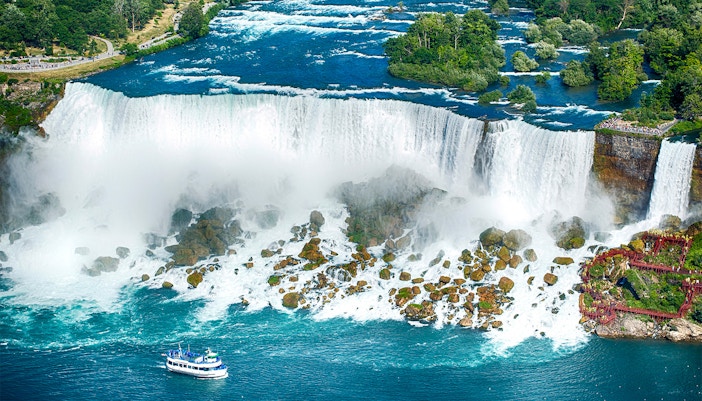
1. Three-for-one
The famous Niagara Falls is not one large waterfall. It is actually made up of three separate waterfalls, the Horseshoe Falls, American Falls, and Bridal Veil Falls.

2. The Ice Age connection
Niagara Falls is about 12,000 years old and was formed from the same glacial-melt activity that formed the Great Lakes at the end of the last Ice Age.

3. The oldest state park in the US
Established in 1885, the Niagara Falls State Park is America’s oldest state park. It was created to avoid the escalating commercial development of the land surrounding the falls as the popularity of the Falls increased.
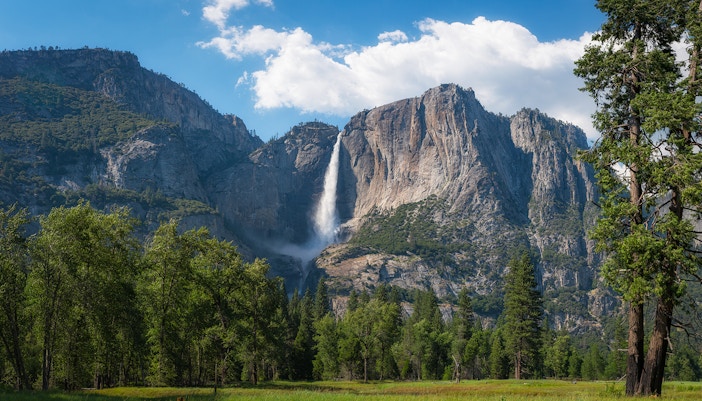
4. Not the tallest waterfall in America
While Niagara Falls’ vertical height of over 176 feet is a majestic sight, it is not the tallest waterfall in the US. This badge of honor goes to Yosemite Falls, which stands at 2,425 feet tall.
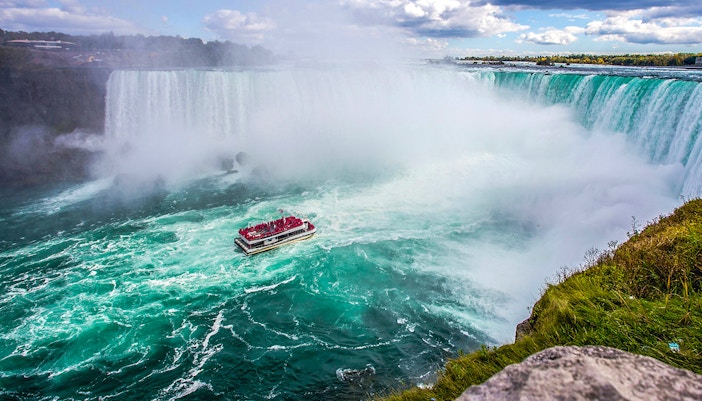
5. North America’s largest waterfall
With 700,000 gallons of water pouring over the edge per second at about 25 miles per hour, Niagara Falls is the largest waterfall in North America by volume and width.
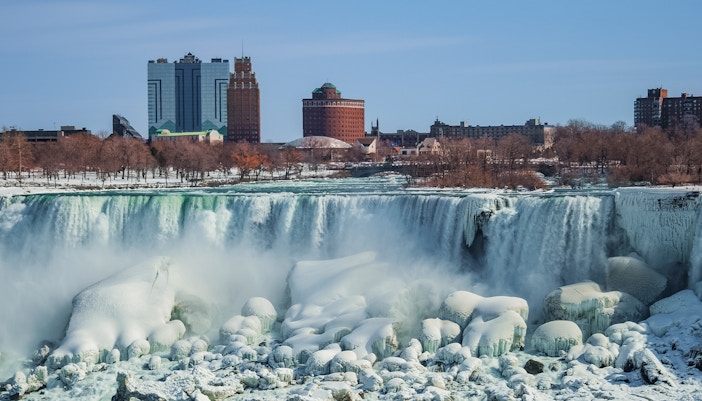
6. Only once in history has the flow of the river stopped
On March 29 in 1848, the thundering roar of the both the American Falls and the Horseshoe Falls halted because the flow of water stopped completely due to an ice jam that formed at the source of the Niagara River on the eastern shore of Lake Erie.
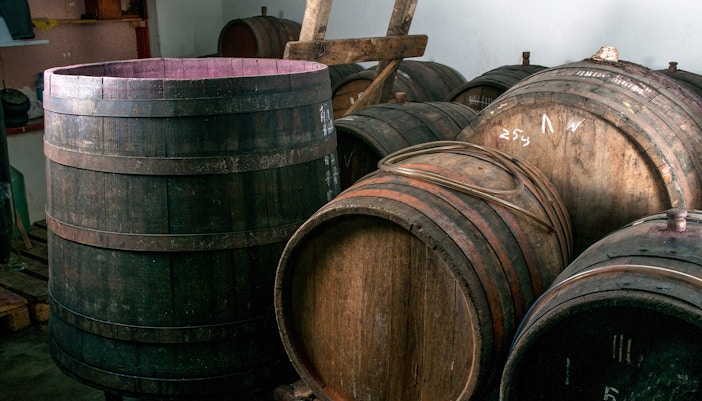
7. A school teacher’s daredevil act
Annie Taylor, a 63-year-old school teacher from Bay City, Michigan, was the first person to travel over the Falls in a barrel and survive. Today, however, performing such stunts at Niagara Falls is illegal, so you can be fined and sent to prison for it.
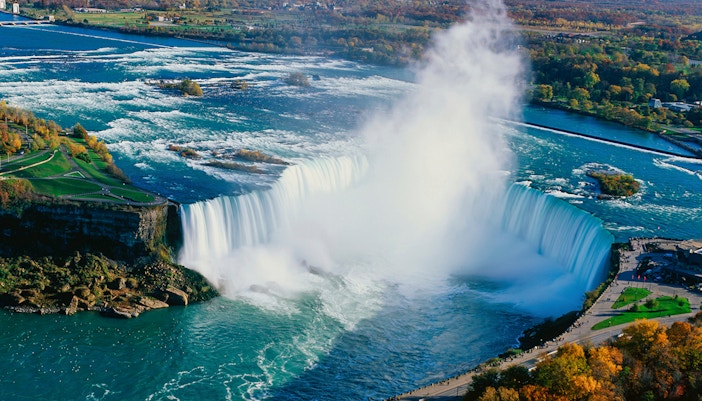
8. Acrobatics over the Niagara Gorge
French tightrope walker Charles Blondin crossed the 1,100 ft Niagara Gorge on a tightrope several times in the mid-1800s. His tightrope walks included everything from walking backward, pushing a wheelbarrow on the high rope, walking with a sack over his body that deprived him of sight, and even starting a fire to cook an omelet!
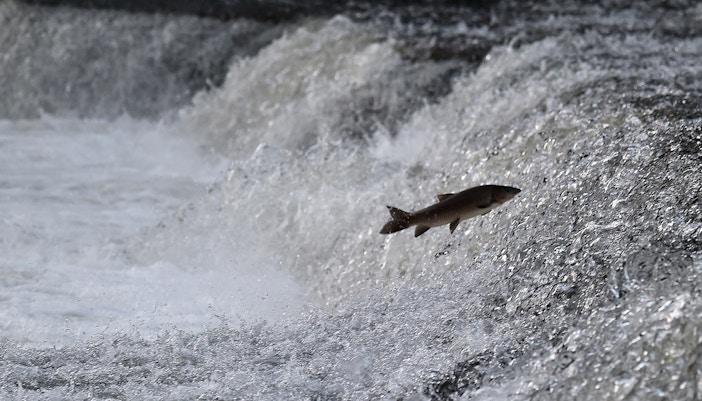
9. Most fish survive the plunge
Nearly 90% of all the fish that plunge over the edge of Niagara Falls survive. You can see that some fish are “stunned” at the bottom after the journey, but they shake it off and swim away.

10. 20% of America drinks water from the Falls
Treated water from Niagara Falls is delivered to over 15 million residents of the state of New York and its vicinity.

11. The power-packed Niagara Falls can light up 3.8 million homes
The power plants on the US and Canadian sides of the Niagara Falls have a combined capacity of producing close to 4.9 million kilowatts of energy.
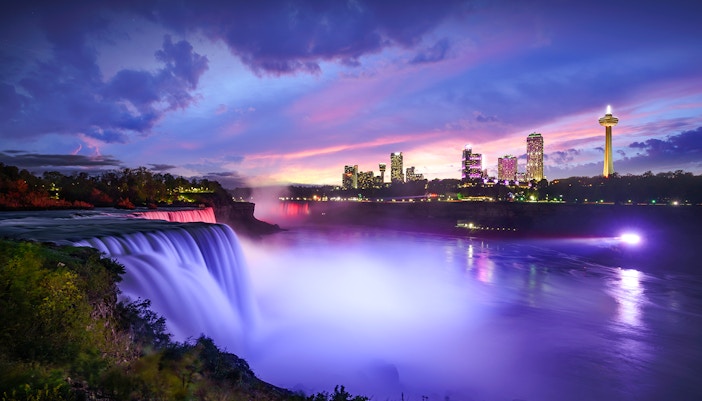
12. The Falls is constantly moving
The original location of Niagara Falls was seven miles downriver near what is now Lewiston. At its current erosion rate of approximately 1 foot per year, the Falls is predicted to disappear into Lake Erie tens of thousands of years from now.